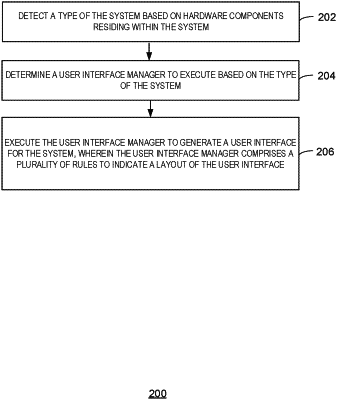| CPC G06F 9/451 (2018.02) [G06F 3/0484 (2013.01)] | 20 Claims |

|
1. A system for generating a user interface, comprising:
a processor; and
memory storing instructions that, when executed by the processor, cause the system to perform operations comprising:
based on hardware components residing within the system or coupled to the system, detect a type of the system to be one of a mobile system, a gaming console system, an augmented reality system, a tablet system, or a desktop system;
determine a first user interface manager, from a plurality of user interface managers each configured for a different system type, to execute based on the type of the system, wherein the plurality of user interface managers include:
the first user interface manager that includes a first plurality of layout rules that indicate a first layout for an operating system user interface and prevent windows corresponding to multiple applications from overlapping; and
a second user interface manager that includes a second plurality of layout rules that indicate a second layout for the operating system user interface and allow the windows to overlap;
execute the first user interface manager to generate a first visual appearance for an operating system of the of the system and a user interface for displaying the multiple applications executed by the operating system according to the first layout and prevent the windows corresponding to the multiple applications from overlapping, wherein the first layout of the user interface is a two-dimensional representation of the applications and system controls;
detect a change in a hardware component coupled to the system;
based on the detected change to the system, select the second user interface manager;
execute the second interface manager to generate a second visual appearance for the operating system; and
morph from the first visual appearance to the second visual appearance.
|